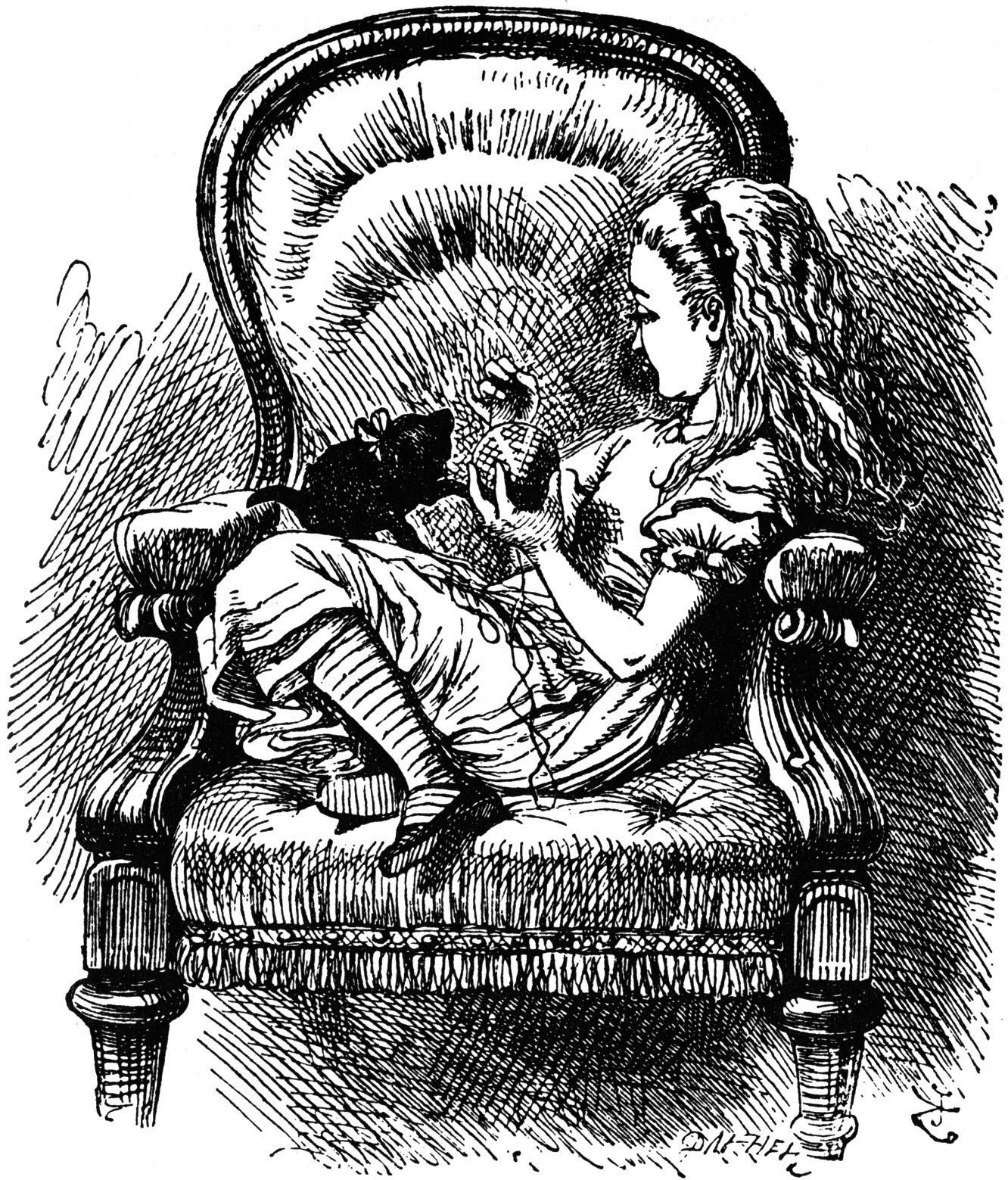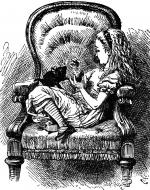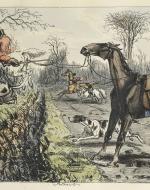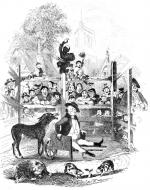Created by Sylvia Yang on Thu, 04/02/2020 - 12:34
Description:
Animals played different roles across social classes in the Victorian era. Families in the upper reaches of society could afford to have animals as domesticated pets. Those of the upper reaches were also able to use animals such as horses and hounds for sports and leisure like hunting. On the other hand, livestock was associated with labor and the working class, providing a source of income, rather than acting as companions. The social divide among the classes disappears when we consider animals in zoos, where people of all social classes came together to visit animals.
John Tenniel, “Alice Sitting in a Chair with her Kitten,” from Through the Looking-Glass, and What Alice Found There, by Lewis Carroll, 1872, from Alice-in-wonderland.net, Through the Looking-Glass pictures. This first plate in the case illustrates a young girl named Alice curled up in a chair holding a ball of yarn and playing with her kitten. This particular image demonstrates how animals that the upper reaches of Victorian society interacted with were usually domesticated pets. These pets were not put to work, and families that owned pets did not rely on them as a form of income. Rather, pets were treated as family members and close companions.
John Leech, “Mr. Jorrocks (loq)--‘Come hup! I say--You ugly Beast,’” from Handley Cross; or, Mr. Jorrock’s Hunt, 1854, by Robert Smith Surtees, the Norman M. Fox Collection, Scribner Library, Skidmore College. This second plate in the case shows a colorful hunting scene in the English countryside with humor. Plump Jorrocks, afraid to leap over the ditch on horseback, attempts unsuccessfully to coax his indignant horse and hound to cross the ditch to continue the hunt. This particular image showcases a sport for the wealthy – fox hunting. The animals featured here, horses and hunting hounds, were for leisurely hobbies in the lives of the wealthy. These animals were expensive to own and, like house-pets, did not contribute directly towards earning an income.
Hablot K. Browne (Phiz), “Mr. Pickwick in the Pound,” from The Pickwick Papers, 1837, by Charles Dickes, from The Victorian Web, scanned by Philip V. Allingham. This third plate in the case shows Mr. Pickwick in a wheel-barrow, having been wheeled into a pound as onlookers from the village gather around him. Awakening from a nap after drinking too much, Mr. Pickwick is disoriented; he falls alseep in one location and wakes up from his nap surrounded by animals in a pen to see the laughing faces around him. The donkey and pigs are farm animals, not of the same value as hunting horses or beloved house-cats. Pickwick's placement in this pen is a funny sight for the villagers, although happily his friends come to rescue him.
George Du Maurier, “At the Zoo,” 1897, from English Society, The Victorian Web, scanned by George P. Landow. This final plate in the case is a cartoon showing a nicely dressed mother and her two children, Tommy and Dorothy, viewing a tiger at the zoo. Tommy questions why the tigers do not live in “little shut-up houses,” and Dorothy replies with a seemingly obvious answer – “to see the people, of course!” Interestingly, the zoo is a place that features exotic animals, who need to be protected, that are neither seen as domesticated pets or as part of the livestock. Hence, animals in zoos intrigued all social classes in the Victorian era, bringing them together in one place to admire the beauty of these animals who also gaze back upon them, as this cartoon playfully suggests.





